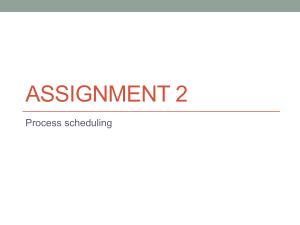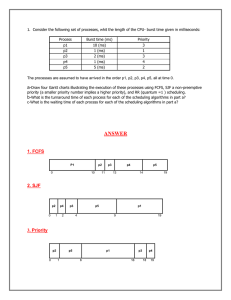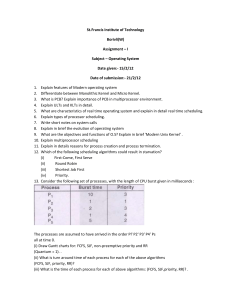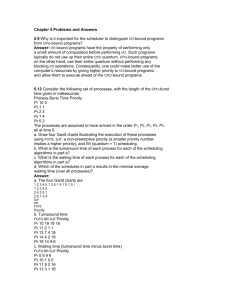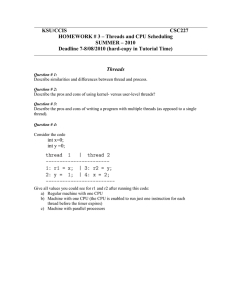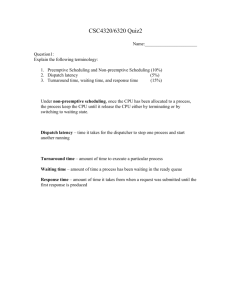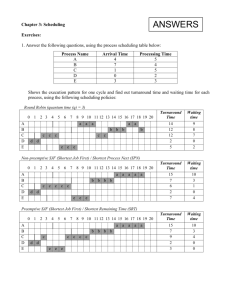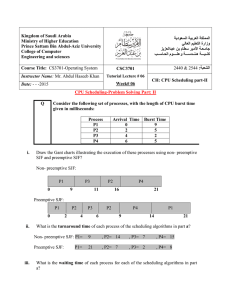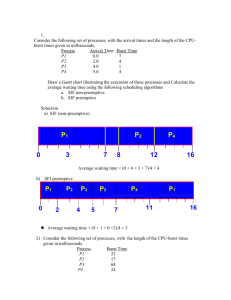Quiz Q1. Give two reasons why caches are useful. What problems
advertisement
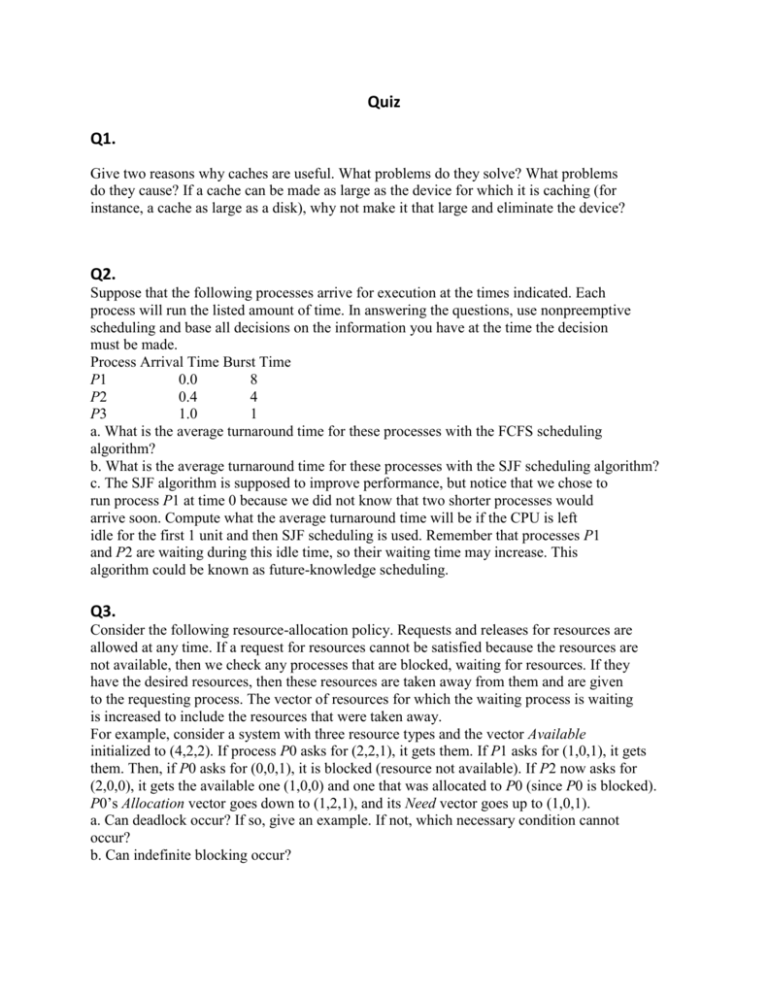
Quiz Q1. Give two reasons why caches are useful. What problems do they solve? What problems do they cause? If a cache can be made as large as the device for which it is caching (for instance, a cache as large as a disk), why not make it that large and eliminate the device? Q2. Suppose that the following processes arrive for execution at the times indicated. Each process will run the listed amount of time. In answering the questions, use nonpreemptive scheduling and base all decisions on the information you have at the time the decision must be made. Process Arrival Time Burst Time P1 0.0 8 P2 0.4 4 P3 1.0 1 a. What is the average turnaround time for these processes with the FCFS scheduling algorithm? b. What is the average turnaround time for these processes with the SJF scheduling algorithm? c. The SJF algorithm is supposed to improve performance, but notice that we chose to run process P1 at time 0 because we did not know that two shorter processes would arrive soon. Compute what the average turnaround time will be if the CPU is left idle for the first 1 unit and then SJF scheduling is used. Remember that processes P1 and P2 are waiting during this idle time, so their waiting time may increase. This algorithm could be known as future-knowledge scheduling. Q3. Consider the following resource-allocation policy. Requests and releases for resources are allowed at any time. If a request for resources cannot be satisfied because the resources are not available, then we check any processes that are blocked, waiting for resources. If they have the desired resources, then these resources are taken away from them and are given to the requesting process. The vector of resources for which the waiting process is waiting is increased to include the resources that were taken away. For example, consider a system with three resource types and the vector Available initialized to (4,2,2). If process P0 asks for (2,2,1), it gets them. If P1 asks for (1,0,1), it gets them. Then, if P0 asks for (0,0,1), it is blocked (resource not available). If P2 now asks for (2,0,0), it gets the available one (1,0,0) and one that was allocated to P0 (since P0 is blocked). P0’s Allocation vector goes down to (1,2,1), and its Need vector goes up to (1,0,1). a. Can deadlock occur? If so, give an example. If not, which necessary condition cannot occur? b. Can indefinite blocking occur? Q4. Given memory partitions of 100K, 500K, 200K, 300K, and 600K (in order), how would each of the First-fit, Best-fit, and Worst-fit algorithms place processes of 212K, 417K, 112K, and 426K (in order)? Which algorithm makes the most efficient use of memory? Q5. A certain computer provides its users with a virtual-memory space of 232 bytes. The computer has 218 bytes of physical memory. The virtual memory is implemented by paging, and the page size is 4096 bytes. A user process generates the virtual address 11123456. Explain how the system establishes the corresponding physical location. Distinguish between software and hardware operations.
